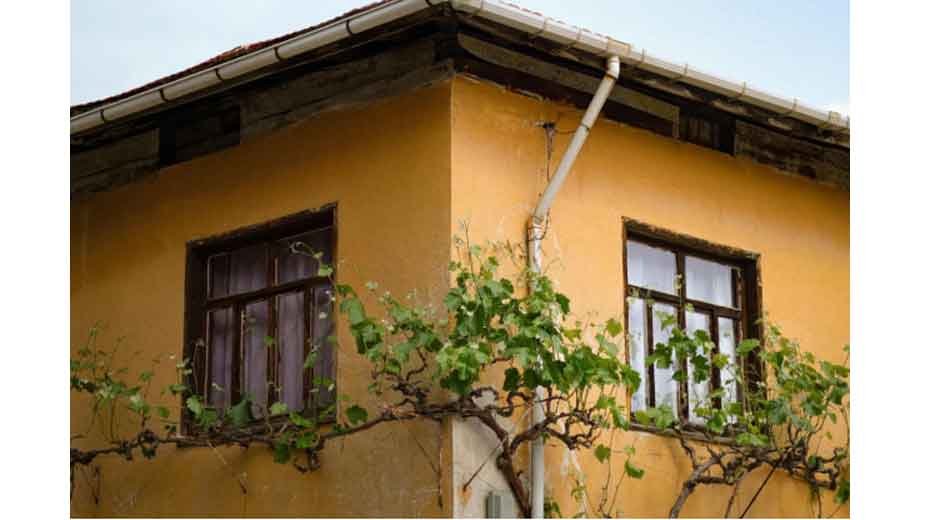Water damage can sneak up on you faster than you think. One day, everything looks fine, and the next, you’re dealing with warped floors, stained ceilings, or even a moldy smell that won’t go away. The problem is, it doesn’t take a major flood or a broken pipe to create costly damage. A clogged gutter, an unnoticed leak, or poor drainage can quietly cause serious trouble behind the scenes.
What’s even more frustrating is that most water damage is entirely preventable with regular upkeep and smart habits. Whether it’s a rainy spring, humid summer, or freezing winter, each season brings its risks. The good news is, you don’t need to be a home improvement expert to keep your house safe and dry; you need to know what to look for and stay on top of a few simple tasks. Let’s start from the top, literally, and work our way down.
Start at the Top: Keep Your Gutters and Downspouts in Check
Your roof plays a major role in protecting your home, but it’s the gutters and downspouts that handle the crucial task of directing water away from it. When your gutters are clogged, cracked, or misaligned, rainwater has nowhere to go. That water can spill over, damage your fascia and siding, and even seep into your foundation. Over time, this can lead to mold growth, wood rot, or structural issues.
To prevent that, make gutter inspections and cleanings part of your seasonal home maintenance routine. Ideally, you should clean them out at least twice a year, once in the spring and again in the fall. If you live in an area with a lot of trees, you may need to check more often.
If you notice sagging sections, standing water, or water stains on your exterior walls, it may be time to contact a gutter repair company to assess and fix the issue before it worsens. A professional service can spot and resolve problems you might miss, such as hidden clogs, loose hangers, or poorly angled downspouts.
GutterPro specializes in seamless gutter systems and professional repairs throughout Huntersville, NC. They offer expert solutions tailored to your home’s structure and local climate, helping ensure your drainage system does its job effectively all year long.
Seal It Up: The Importance of Proper Caulking and Weatherproofing
Even the smallest gap around a window or door can let water sneak into your home. Over time, sealant breaks down due to exposure to the elements. That’s why it’s essential to walk around your home at least once a year and check for cracks or worn-out caulking.
Look closely at window frames, door trims, and anywhere different materials meet, like siding to foundation or roof to wall. If you spot gaps or peeling sealant, reapply high-quality exterior-grade caulk to create a watertight barrier. Don’t forget to check the inside too, especially around bathroom and kitchen fixtures, where steam and moisture can build up.
Sealing your home not only prevents water damage but also improves energy efficiency by keeping drafts and humidity in check.
The Basement and Foundation: Where Water Loves to Linger
Your basement or crawl space is often the first place to show signs of moisture problems. These areas are naturally prone to dampness, but excessive water can be a red flag for poor drainage or foundation cracks.
Take a walk around your home’s exterior after heavy rainfall. If water is pooling near your foundation, it’s likely not being directed far enough away. Make sure your downspouts extend at least four to six feet from the base of your home, and adjust your landscaping to slope away from the structure.
Inside, check for damp spots, white chalky residue on walls (efflorescence), or musty smells. If you find them, you may need to invest in a dehumidifier or consider waterproofing solutions like sealant paints or a sump pump system. Addressing these issues early can save you thousands in structural repairs later.
Plumbing Maintenance: Don’t Let Leaks Lurk Indoors
A dripping pipe might not seem like a big deal, but over time, even small leaks can lead to major damage. Beyond water stains, persistent leaks can rot flooring, attract pests, and lead to dangerous mold growth.
Get into the habit of checking under sinks, behind toilets, and around appliances like your washing machine or dishwasher. Feel around for dampness or water stains, and listen for slow drips. Rubber hoses, especially on washing machines, should be replaced every five years, and it’s smart to install water alarms in vulnerable spots like under the water heater.
Also, inspect your water heater regularly for rust or pooling water around its base. Replacing aging plumbing components before they fail is one of the smartest ways to prevent future disasters.
Seasonal Checklist: Stay Ahead of the Storm
Each season poses unique risks when it comes to water damage, but with a proactive checklist, you can stay one step ahead.
In the spring, inspect your roof for damage left by winter storms, clear out your gutters, and test your sump pump if you have one.
In the summer, look out for hidden leaks caused by increased water usage, and keep an eye on humidity levels inside your home.
In the fall, remove leaves from gutters and check your foundation for cracks. It’s also a great time to seal your windows before the chill sets in.
In the winter, protect your pipes from freezing by insulating exposed plumbing and keeping your thermostat set to a consistent temperature, even when you’re away.
Setting seasonal reminders can make these tasks manageable and prevent last-minute repairs.
Know When to Call in a Pro
While many water prevention strategies are DIY-friendly, some problems require a professional eye. If your basement keeps leaking despite your efforts, or if your gutters are constantly overflowing no matter how often you clean them, it’s time to bring in expert help.
Professionals have the tools and experience to diagnose root issues, whether it’s poor drainage, faulty grading, or hidden structural damage. Hiring a reputable service not only saves time but also helps prevent costly mistakes.
From roof inspections to gutter repairs, working with trained experts ensures your home stays safe, secure, and dry, especially when unpredictable weather rolls in.
Water damage might be common, but it doesn’t have to be inevitable. With consistent maintenance and a little seasonal planning, you can safeguard your home and avoid the stress and expense of unexpected repairs. Start from the outside with your roof and gutters, work your way down to the foundation, and stay alert to signs of trouble indoors.
Protecting your home from water damage year-round is all about staying informed and taking action before small issues turn into major headaches. And when you need a hand, don’t hesitate to call in the pros who know exactly what to look for and how to fix it right the first time.






